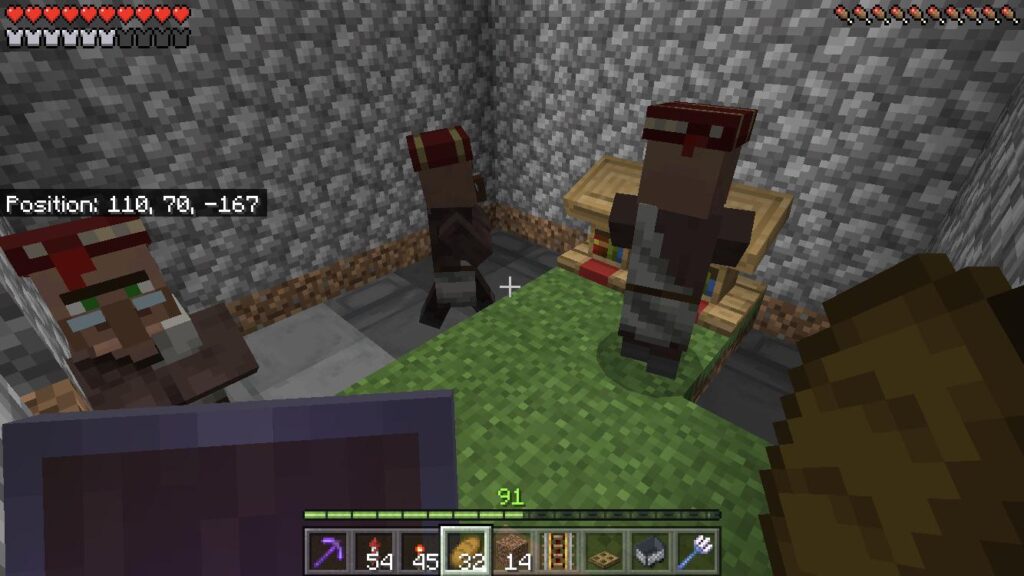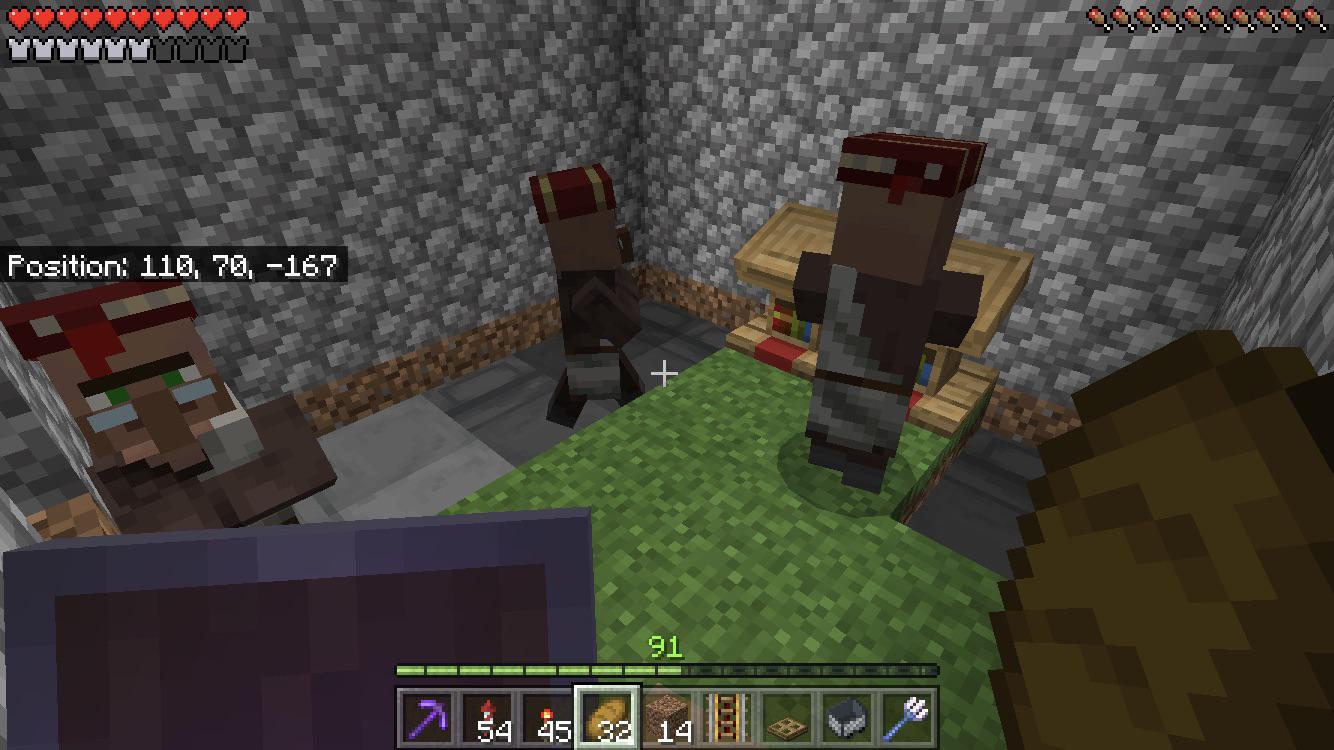
Why Won’t the Villagers Breed? Understanding Minecraft’s Population Puzzle
One of the most frustrating experiences in Minecraft can be setting up a village, only to find that the villagers stubbornly refuse to breed. You’ve built houses, provided beds, and traded with them, yet the population remains stagnant. This article delves into the various reasons why won’t the villagers breed, offering a comprehensive guide to troubleshoot and resolve the issue. We will explore the mechanics of villager breeding, common pitfalls, and effective solutions to get your village thriving. Understanding these mechanics is crucial for any player looking to establish a self-sufficient and growing community within their Minecraft world. If you’re asking yourself, “why won’t the villagers breed,” this guide is for you.
Understanding the Fundamentals of Villager Breeding
Before diving into the troubleshooting steps, it’s essential to understand the core mechanics that govern villager breeding in Minecraft. The process is more complex than simply having two villagers near each other. Several conditions must be met for breeding to occur successfully.
Bed Requirements
Each villager requires a bed to be considered eligible for breeding. However, simply having enough beds isn’t sufficient. There must be more beds than the current number of villagers. This surplus of beds signals to the villagers that there is room for population growth. If you have ten villagers, you need at least eleven beds for them to consider breeding. These beds must also be accessible to the villagers; obstructions can prevent them from recognizing the availability.
Food Provision
Food is another critical factor in villager breeding. Villagers need to be willing to breed, and willingness is tied to their food supply. They need to have enough food in their inventory to become willing. Villagers can obtain food in several ways: farming, trading, or receiving food from the player. The most effective foods for breeding are bread, carrots, potatoes, and beetroots. Each villager needs 12 bread, carrots, potatoes, or beetroots to become willing. Alternatively, they can have 3 pieces of any type of crop. Ensure that your villagers have access to a consistent food supply to facilitate breeding. A good strategy is to set up an automatic farm nearby.
Mob Griefing and Game Rules
The mobGriefing game rule can significantly impact villager breeding. If mobGriefing is disabled (set to false), villagers will not be able to pick up food, which is essential for them to become willing to breed. Ensure that mobGriefing is enabled (set to true) using the command /gamerule mobGriefing true. This setting allows villagers to interact with their environment and gather the necessary resources for breeding.
Troubleshooting Common Breeding Issues
Even with a basic understanding of the mechanics, you might still encounter issues. Let’s examine some common problems and their solutions.
Insufficient Bed Availability
As mentioned earlier, having more beds than villagers is crucial. Double-check the number of beds in your village and compare it to the villager population. Ensure that all beds are accessible and not obstructed by blocks or other entities. Sometimes, a bed might be placed in a way that the villager cannot reach it, rendering it unusable for breeding purposes. Consider spreading the beds out across multiple houses to improve accessibility. If you’re wondering, “why won’t the villagers breed,” always start with the beds.
Food Shortage
A lack of food is a common reason why won’t the villagers breed. Villagers need a steady supply of food to become willing. Observe your villagers to see if they are actively farming or if they have access to food. If not, consider building a farm and manually distributing food to them. An automatic farm can be a sustainable solution, ensuring a constant supply of bread, carrots, potatoes, or beetroots. Remember, each villager needs 12 of these items to become willing.
Obstructions and Pathfinding Issues
Villagers need to be able to move freely to access beds and food. Obstructions such as fences, walls, or even poorly placed blocks can hinder their movement and prevent them from reaching necessary resources. Ensure that there are clear pathways between beds, food sources, and workstations. Pathfinding issues can be subtle, so carefully inspect the village layout for any potential obstacles. Sometimes, even a single misplaced block can disrupt the entire breeding process. This is a common reason why won’t the villagers breed.
Workstations and Professions
While not directly required for breeding, workstations play a role in villager behavior. Each villager needs a workstation to claim a profession. Professions influence their trading habits and overall activity. Having unemployed villagers can sometimes disrupt the breeding process. Ensure that each villager has access to a workstation that corresponds to their desired profession. Common workstations include composters, lecterns, grindstones, and smithing tables. Assigning professions keeps villagers active and can indirectly improve their breeding behavior. It also creates a more dynamic and productive village.
Village Size and Boundaries
The game defines a village based on the number of beds and workstations within a certain radius. If the village is too small or fragmented, the villagers might not recognize it as a viable breeding location. Ensure that all beds and workstations are clustered together within a reasonable area. If the village is too spread out, consider consolidating the structures to create a more cohesive village center. The game’s village detection algorithm can be finicky, so it’s essential to create a clearly defined village boundary.
Villager Happiness and Trading
While not explicitly documented, some players believe that villager happiness, influenced by trading, can affect breeding rates. Trading with villagers can increase their happiness, potentially making them more willing to breed. Regularly trade with your villagers to keep them engaged and satisfied. This can involve buying and selling items, completing quests, and generally interacting with them. Happy villagers are more likely to contribute to a thriving village community, including breeding.
Advanced Troubleshooting Techniques
If the basic solutions don’t work, consider these advanced troubleshooting techniques.
Relogging and Chunk Reloading
Sometimes, the game might experience glitches that prevent villagers from breeding. Relogging (exiting and re-entering the game) can often resolve these issues by forcing the game to reload the chunks and refresh the villager AI. This simple step can sometimes be surprisingly effective in getting villagers to breed. If relogging doesn’t work, try restarting the entire Minecraft server or game client.
Moving Villagers to a New Location
In rare cases, the issue might be related to the specific location of the village. Try moving the villagers to a new location and setting up a new breeding area. This can help rule out any environmental factors that might be hindering the breeding process. Use minecarts or boats to transport the villagers to the new location. Ensure that the new location meets all the requirements for villager breeding, including sufficient beds, food, and workstations.
Using Commands for Forced Breeding
As a last resort, you can use commands to force villagers to breed. This is generally not recommended, as it can disrupt the natural gameplay experience. However, if you are desperate to increase the villager population, you can use commands to set the villager’s willingness to breed. This involves using the /data command to modify the villager’s NBT data. Be cautious when using commands, as they can have unintended consequences. Remember to back up your world before using commands that modify villager data.
Checking for Bugs and Glitches
Minecraft is a complex game, and bugs and glitches can sometimes affect villager behavior. Check the Minecraft bug tracker for any known issues related to villager breeding. If you encounter a bug, report it to the developers so they can investigate and fix it. Staying up-to-date with the latest Minecraft patches and updates can also help resolve breeding issues caused by bugs. Sometimes, why won’t the villagers breed can be attributed to a simple bug.
Preventative Measures for Sustainable Breeding
To ensure a sustainable villager population, consider implementing these preventative measures.
Automated Farming Systems
Invest in automated farming systems to provide a consistent food supply. This can involve building automatic wheat, carrot, potato, or beetroot farms. These farms can be designed to automatically harvest and distribute food to the villagers, ensuring that they always have enough to eat. Automated farms are a long-term solution to the food shortage problem and can significantly improve villager breeding rates.
Regular Village Maintenance
Regularly maintain your village to ensure that all beds, workstations, and pathways are clear and accessible. Remove any obstructions that might hinder villager movement. Keep the village well-lit to prevent hostile mobs from spawning and disrupting the breeding process. Regular maintenance can help prevent many of the common issues that can prevent villagers from breeding.
Monitoring Villager Happiness
Monitor villager happiness by regularly trading with them and fulfilling their needs. Keep track of their professions and ensure that they have access to the appropriate workstations. A happy and productive village is more likely to have a thriving population. While happiness isn’t a direct factor, a happy villager is more likely to be an active villager. If you’re still asking, “why won’t the villagers breed,” review these steps.
Conclusion
Understanding why won’t the villagers breed in Minecraft requires a comprehensive approach. By addressing the fundamental requirements of beds, food, and accessibility, and by troubleshooting common issues, you can create a thriving and growing village. Remember to implement preventative measures to ensure a sustainable population and to monitor villager happiness. With patience and persistence, you can overcome the challenges of villager breeding and establish a vibrant community in your Minecraft world. The question of why won’t the villagers breed is now one you can confidently answer and resolve. By implementing these strategies, your village will flourish. Don’t forget to ensure that mobGriefing is enabled. Good luck, and happy breeding!
[See also: Minecraft Villager Trading Guide]
[See also: Building an Automatic Farm in Minecraft]
[See also: Minecraft Village Mechanics Explained]

